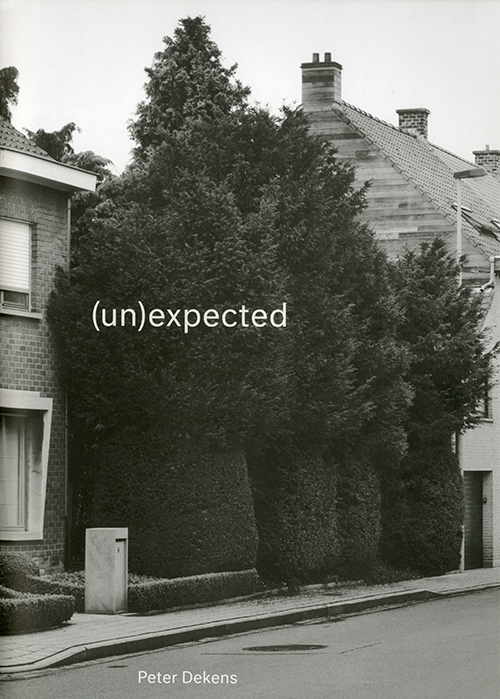| SIMON DENISON IMAGE & TEXT |
| PREVIOUS | NEXT |
(UN)EXPECTED Peter Dekens The Eriskay Connection, 2016 ISBN 978-94-92051-18-9 Pb
(Un)expected addresses the issue of suicide and its traumatic effect on close family members, focusing on the Belgian region of Western Flanders where 20 people commit suicide every month, a rate 1.5 times above the European average. This A4 booklet-style publication contains black-and-white pictures of suburban houses and streets with parked cars but no signs of people, interspersed with five sections in colour on a smaller paper size presenting case studies: a girl who lost her boyfriend, two mothers who lost sons, a family who lost their wife/mother – and the photographer’s own story: Dekens’s mother hanged herself in 2008. The case studies depict the survivors at home or visiting the suicide sites. Some are shown to be coping but most appear pensive, dazed or distraught. One mother weeps, her face in her hands. Pictures inside the homes include a surfing poster on a dead son’s bedroom wall, and a surviving husband’s double-bed with a single set of pillows. We see letters and diary entries expressing grief and confusion, old snapshots of the victims smiling when younger and a mother’s suicide letter to her children. Brief explanatory notes hint at causes: sexual abuse, transgender issues, psychosis, marital conflict and family history of suicide. The subject matter has such force, particularly in view of the photographer’s own story, that it threatens to overwhelm the book and the images. One feels such sympathy for the survivors that it requires a conscious effort to consider the book as a text rather than a transparency. The empty street-view photographs are presented as flat tones in flat wintry light and many houses have metal roller-shutters drawn down like closed industrial units. The effect is gloomy and repellent, suggesting the built environment is partly to blame. The case studies focus only on suicide and its emotional impact; we see nothing of the survivors’ wider lives. The book’s rhetoric is relentless. It makes us look at what is normally kept hidden but offers little wider contextual explanation or relief. |
 |
|---|---|